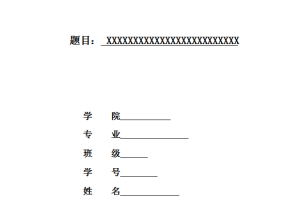Abstract
No context, no text. Context confines choices of lingual units, understanding of meanings and expressing of meanings. Context is always connected with communicational occasions, thus it also systematically and regularly restricts the expressing and understanding of language in cross-cultural communication. Linguists have done many researches on context from different perspectives and they defined context differently. However, they all share the same view that context is the environment in which language is used and by which language conveys its real sense. So far as cross-cultural communication is concerned, context in this paper refers to cultural context, including social and cultural backgrounds, communicative context which includes communicative background, communicators and nonverbal codes, and linguistic context which refers to linguistic knowledge and utterance message. They interact in the communication. Communicators’ understanding of these contexts is restricted to such contextual features as subjectivity, dynamics, gradability and disparity, so communicators involved in the same context may understand it differently. Thus, context has an influence on cross-cultural communication. On one hand, it may result in a successful communication, helping communicators to deduce implicated information, eliminate ambiguity and supply the information omitted through ellipsis. On the other hand, it may lead to miscommunication, making communicators misunderstand each other or even have no idea of what others say. Therefore, communicators are supposed to make good use of context in cross-cultural communication to avoid disadvantageous context and create advantageous context, trying to cut down miscommunication and achieve more successful communication.
Key Words: context cross-cultural communication effects application
摘 要
没有语境,就没有言语交际。语境制约着语言单位的选择,意义的表达和理解,又由于语境总是与一定的交际场合发生联系,语境也就对跨文化交际中语言的表达和理解产生系统的,规律性的制约。虽然语言学家从不同的角度研究了语境并根据研究结果对语境做出不同的定义。但他们都认为语境是语言使用的环境和真实意义传达的工具。就跨文化交际而言,本文中所指的语境,包括文化语境,交际语境和语言语境,它们相互作用,相互影响。由于交际双方对这些语境的理解受到语境的主观性,动态性,完整性和差异性的制约,他们对同一语境的理解不一定会相同。所以,语境影响跨文化交际的进程。一方面,语境有助于交际双方获得言外之意,消除歧异,补充话语省略的信息。另一方面,语境同时也会使交际双方之间产生误解,甚至根本听不懂对方的话。因此,在跨文化交际中,交际双方应该充分利用交际过程中的语境来避开不利的语境,创造有利的语境,以减少交际障碍,达到成功的交际。
关键词:语境 跨文化交际 影响 应用
Contents
Acknowledgements…………………………………………………………………..i
Abstract(English)………………………………………………..……………………ii
Abstract(Chinese)……………………………………………………..……………..iv
- Introduction………………………………………………………………………. 1
- Definition………………………………… ………………………..….………… 1
2.1 The definition of context ………………………………………………………1
2.2 The definition of cross-cultural communication……………………………….2
- Classification of context………………… ………………………………………..3
3.1 Cultural context…………… …………………………………….……………5
3.1.1 Social background……………………………………………………… 5
3.1.2 Cultural background……………………………………………………. 7
3.2 Communicative context ……………………………………….………………8
3.2.1 Communicative background……………………………………………..8
3.2.2 Communicators…………………………………………………………..9
3.2.3 Nonverbal codes…………………………………………………………10
3.3 Linguistic context………………………………………………………………11
3.3.1 Linguistic knowledge……………………………………………………11
3.3.2 Utterance message……………………………………………………….11
- Features of context…………………………………………………………………12
4.1 Subjectivity………………………………………………………………..……12
4.2 Dynamics………………………………………………………………………13
4.3 Gradability……………………………………………………………………14
4.4 Disparity………………………………………………………………………15
- The effects of context on cross-cultural communication…………………………15
5.1 The positive side………………………………………………………………16
5.1.1 Inference for implicated information……………………………………16
5.1.2 Elimination of ambiguity……………………………………………….17
5.1.3 Supplication of information omitted through ellipsis…………………..18
5.2 The negative side……………………………………………………………..19
5.2.1 Acquisition of no information…………………………………………..19
5.2.2 Misunderstanding……………………………………………………….20
- The application of context to cross-cultural communication……………………..21
6.1 Avoidance of the disadvantageous context …………………………………..22
6.2 Creation of the advantageous context ………………………………………. 23
- Conclusion………………………………………………………………………..25
References………………………………………………………………..…………26





